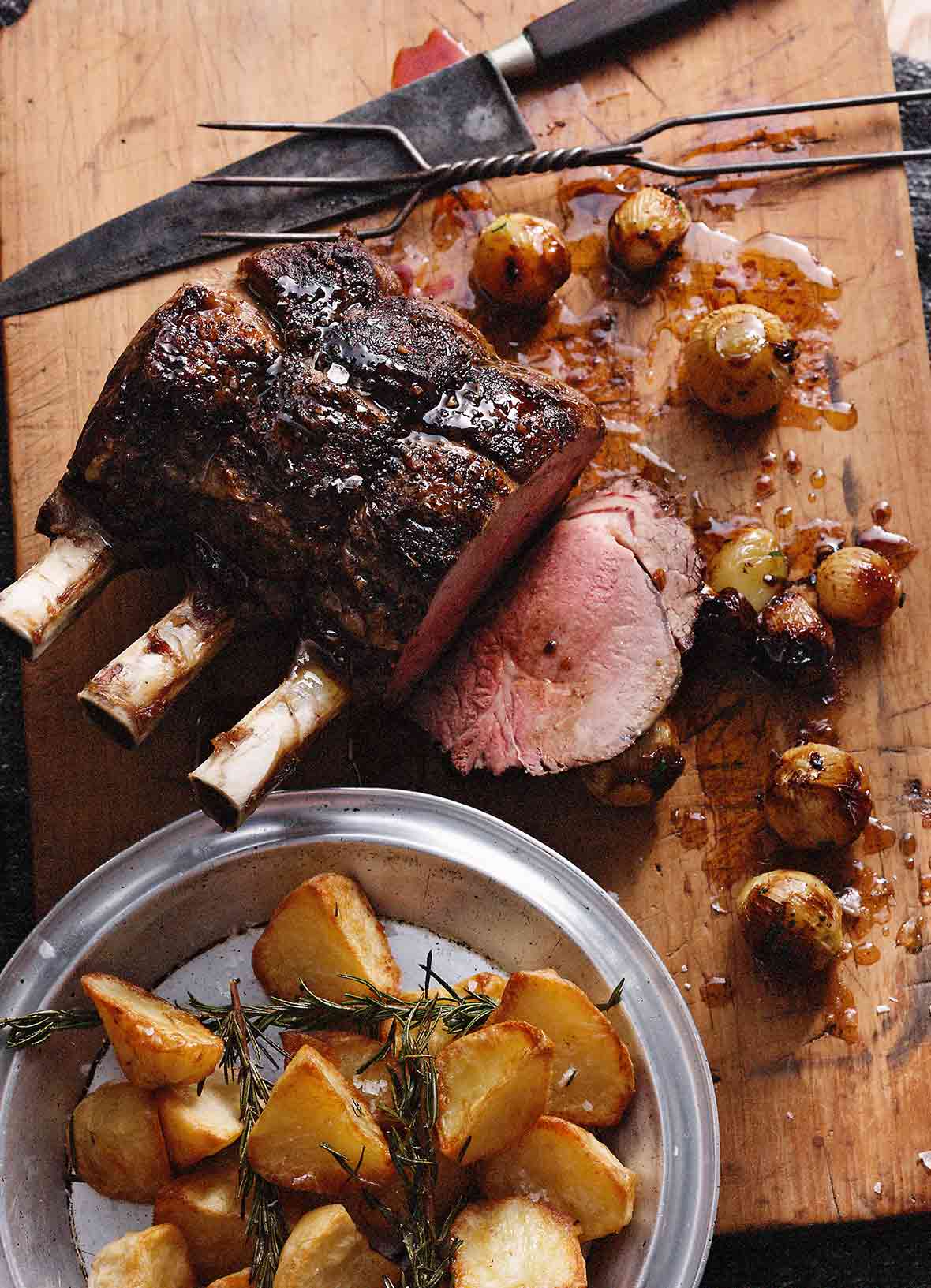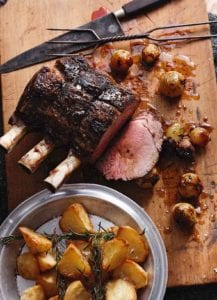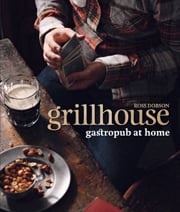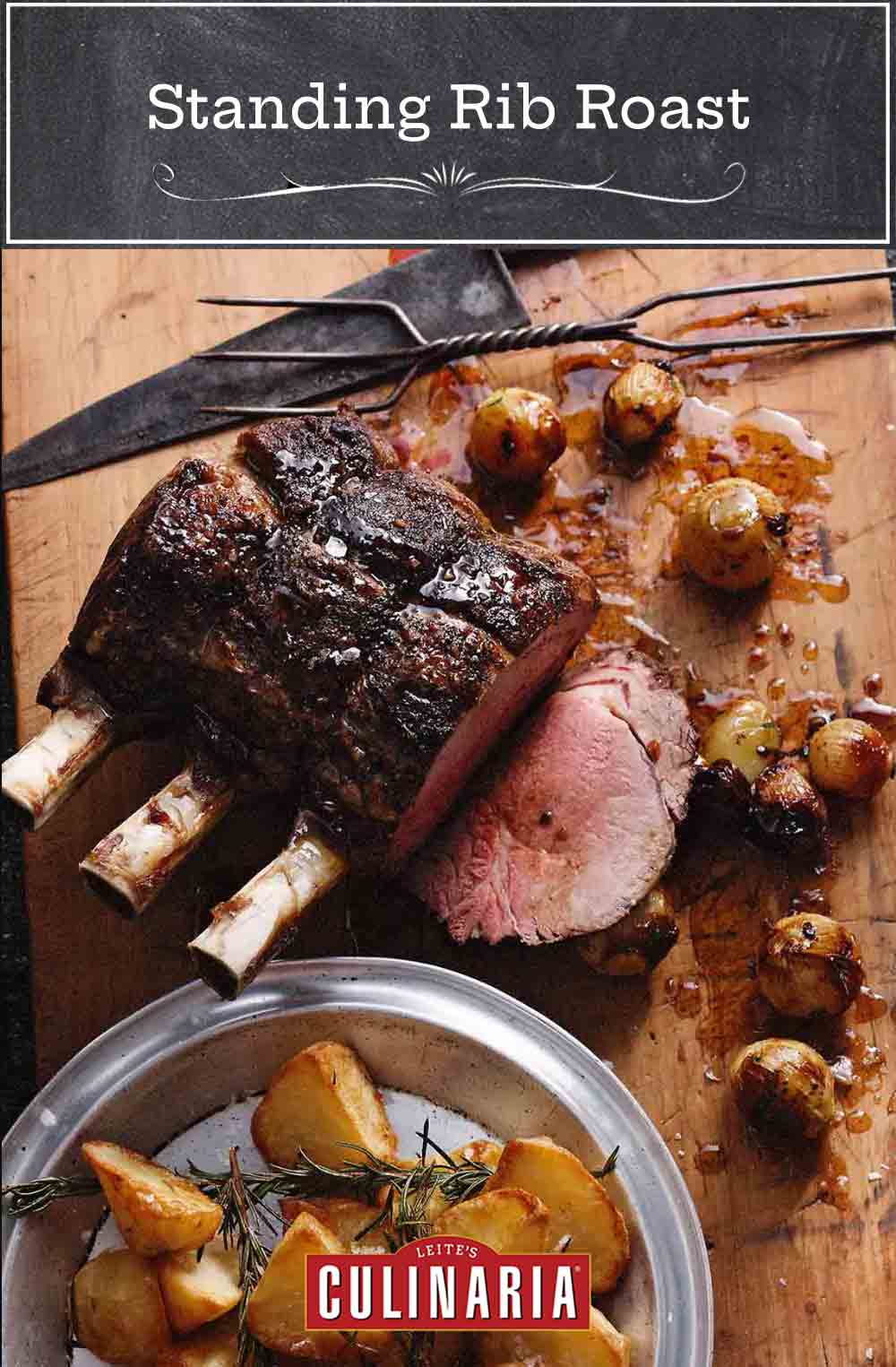
A classic standing rib roast is essentially several unsliced bone-in rib eye steaks, standing on end alongside one another in an impressive formation worthy of the most special of occasions. And the taste? Trust us, there are far worse things to tuck into for dinner, whether Sunday supper or a Christmas feast. Here’s how to cook it.–Renee Schettler Rossi
Is there a difference between standing rib roast and prime rib?
Not really. They’re the same luxuriously indulgent cut of meat, which is also, confusingly, sometimes labeled “prime rib roast” or “rib roast.” It’s the same cut of beef that, when sliced into steaks, is known as rib eye, whether it’s left on the bone or boneless.

Standing Rib Roast
Ingredients
- 1 standing rib roast with 4 bones (at least 3 1/2 lbs [1.6 kg] and quite possibly more), frenched, if desired
- 1 tablespoon coarse sea salt
- 2 teaspoons freshly ground black pepper
- 5 1/2 tablespoons (2 1/4 oz) unsalted butter
- 2 tablespoons olive oil
- 12 small fresh pearl onions, peeled
- 3 cloves garlic, finely chopped
- Handful flat-leaf parsley leaves, finely chopped
Instructions
- Remove the standing rib roast from the refrigerator and place it on a wire rack set on a plate. In a small bowl, combine the salt and pepper and rub it all over the beef. Let rest at room temperature for 1 hour.
- Preheat the oven to 300°F (148°C).
- In a large, ovenproof skillet or roasting pan over medium-high heat, heat half the butter and half the oil until almost but not quite smoking. Add the beef, top-side down, and sear, without moving, for 4 to 5 minutes.
- Carefully turn it over and cook for another 5 minutes. Remove the meat from the pan and carefully pour off the hot fat that’s in the pan.
- Carefully add the remaining butter and oil to the pan and return it to medium-high heat, tilting the pan and swirling the butter so it sizzles. Add the onions and garlic and toss to coat in the butter.
- Nudge the onions and garlic to the side of the pan and place the standing rib roast in the center, top-side up. Place the pan in the oven and roast, stirring the onions from time to time, until the roast reaches the desired doneness, about 1 hour for medium-rare, or 135°F to 140°F (57°C to 60°C) on an instant-read thermometer.
- Move the standing rib roast to a cutting board, set it in a warm place, and let it rest, uncovered, for 10 to 15 minutes.
- Meanwhile, if desired, spoon any excess fat from the surface of the pan juices and discard. Add the parsley to the onions in the pan and stir to coat with the juices. Return the pan to the turned-off oven to keep the juices warm while the roast rests. Tip any juices from the cutting board into the pan with the onions and stir to combine.
- Carve the roast between the ribs to yield 4 portions of meat with a bone in each. Spoon the onions and juices over the meat or pass them on the side.
Video

Nutrition
Nutrition information is automatically calculated, so should only be used as an approximation.
Recipe Testers’ Reviews
This standing rib roast recipe knocked our socks off. It’s so simple and yet prepares a perfectly cooked, perfectly seasoned piece of meat. I added small potatoes to the pan with the onions and they came out perfectly cooked. Are you sensing a theme here? This recipe is perfection!
Let me start by saying that I was unable to find a standing rib roast so I got 3 nice-size bone-in rib eyes. I followed the recipe to a T, apart from a slightly shorter time in the oven. The final product was outstanding. Simple in taste and the beef was cooked to perfection.
It’s very easy to make and will definitely wow your family and/or guests. I can see this being the perfect meal for a special occasion such as Thanksgiving (if you’re not into turkey) or Christmas.













This is a money-is-no-object recipe….
You’re right, CateS. It’s definitely not a random Tuesday night dinner. Yet sooooo worth the splurge.
Sofia, your bone-in rib eye is the same cut of meat as a standing rib. You were right on! I found it interesting that cooking time alone was offered and not a thermometer to test the internal temperature of the meat. The cut looked medium done. Nice.
You know, Stu B., you’re of course right, most standing roast recipes do offer temperatures as well as timing. Quite often if they don’t include this we’ll add it as a means of making a recipe more approachable for our readers. But this particular chef has a sort of hands-on, flawless approach to cooking techniques that we didn’t want to tamper with…I hope you understand. But I appreciate your comment and careful eye, thank you.
Now this would be a cookbook I could sink my teeth into. I’m a rib eye gal all the way so this would be sheer perfection for me.
I’ve always wondered for folks like me who don’t like pepper, if there’s something else that I can try in its place or just omit it. I always just omit but curious what David and the LC crew would suggest to do.
Kim, I think we’re kindred souls, as I, too, am a rib eye gal and sometimes, inexplicably, I’m just not in the mood for pepper. I’m a purist with most ingredients, but I do find that if pepper is used as a seasoning with a light hand only prior to cooking, the taste of pepper isn’t discernible in the final steak or roast, though it does seem to lend a somewhat subtle yet certain savoriness to the roast. But I’ve also gone without pepper and have been quite pleased with the results. So I’d suggest simply going without and still reveling in that beefy goodness. But I’m sure others have differing opinions….